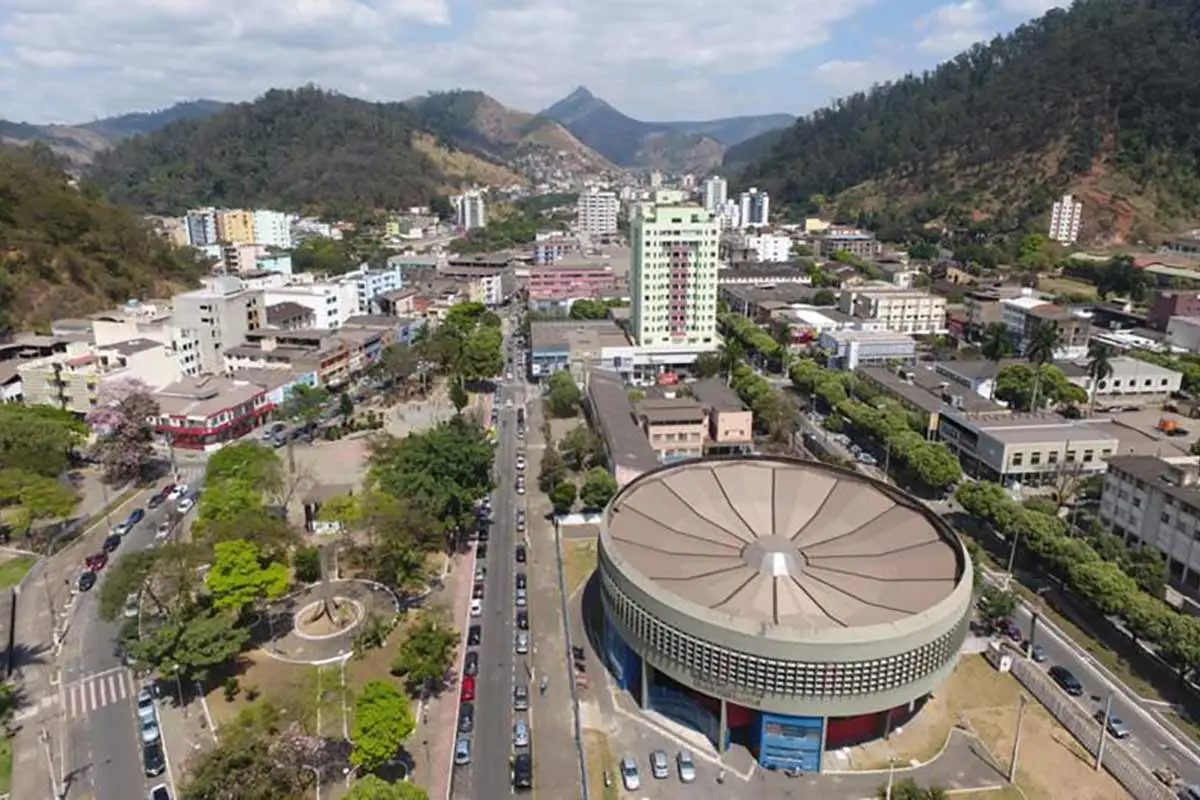The mining town of Timoteo, located in Vale do Aco, is one of the municipalities with the most polluted air in Brazil, according to the World Air Quality Report 2023, conducted by IQ AirIt is a Swiss company specialized in air quality technology and protection against pollutants. According to the listing, Timóteo has a level of particles MP 10.1, which is two to three times higher than the parameter recommended by World Health Organization (WHO).
The Brazilian municipality that witnessed the worst pollution rate was the city of Zapori in Acre. Osasco, in the São Paulo metropolitan area, is the second most polluted city in Brazil. Other cities in São Paulo with an air quality index three to five times worse than recommended by the World Health Organization are: Guarulhos, Río Claro and Cubatao.
Manaus, the capital of Amazonas state, showed a significant deterioration in air quality between 2021 and 2023, according to the report. The amount of particulate matter with a diameter of up to 2.5 micrometers (PM 2.5) in the city of Amazonas exceeds the amount set by the World Health Organization by more than three times. In 2021, the level of PM2.5 in the atmosphere of Manaus was two times higher than the level recommended by the Organization.
The only city in the country among those analyzed that fell within the criteria set by the World Health Organization was Fortaleza.
In the country, the level of PM2.5 in the atmosphere is more than double the recommended level, ranking it as the 83rd most polluted country. However, this number represents a decline compared to the first global records for air quality. In 2018, for example, the presence of these substances in the atmosphere more than tripled.
Particles have been linked to deaths and illnesses from heart and lung problems. According to the World Health Organization, MP 2.5 is one of those that have the greatest impact on health.
Air quality in Brazilian cities
Based on particulate matter concentration (PM 2.5), in micrograms per cubic meter. Below, all Brazilian cities are analysed.
– Zapori (Acre): 21 (exceeds 3 to 5 times the WHO standard);
– Osasco (São Paulo): 19.4 (exceeds 3 to 5 times the WHO standard);
– Manaus (Amazon): 16.8 (exceeds 3 to 5 times the WHO standard);
– Camatsari (Bahia): 16.2 (3 to 5 times exceeds WHO standards);
– Guarulhos (São Paulo): 16 (exceeds 3 to 5 times the WHO standard);
– São Caetano (São Paulo): 15.9 (exceeds 3 to 5 times the WHO standard);
– Rio Claro (São Paulo): 15.5 (exceeds 3 to 5 times the WHO standard);
– Cubatao (São Paulo): 15.4 (exceeds 3 to 5 times the WHO standard);
– Acrelandia (Acre): 15 (2 to 3 times exceeding WHO standards);
– Campinas (São Paulo): 15 (exceeds 2 to 3 times the WHO standard);
– MAWA (São Paulo): 14.6 (exceeds 2 to 3 times the WHO standard);
– Porto Velho (Rondônia): 14.3 (2 to 3 times more than WHO standards);
– São Paulo: 14.3 (exceeds 2 to 3 times the WHO standard);
– Senator Guimard (Acre): 13.4 (exceeds 2 to 3 times the WHO standard);
– Santos (São Paulo): 13.1 (exceeds 2 to 3 times the WHO standard);
– Ribeirao Preto (São Paulo): 13 (exceeds 2 to 3 times the WHO standard);
– Jundiai (São Paulo): 12.6 (exceeds 2 to 3 times the WHO standard);
– Rio Branco do Sul (Paraná): 11.9 (2 to 3 times more than WHO standards);
– Curitiba (Paraná): 11.9 (2 to 3 times more than the WHO standard);
– Rio Branco (Acre): 11.8 (exceeds 2 to 3 times the WHO standard);
– Piracicaba (São Paulo): 11.8 (exceeds 2 to 3 times the WHO standard);
– Rio de Janeiro: 11.7 (exceeds 2 to 3 times the WHO standard);
– Manuel Urbano (Acre): 11.5 (exceeds 2 to 3 times the WHO standard);
– São José dos Campos (São Paulo): 11 (2 to 3 times more than WHO standards);
– Taubate (São Paulo): 10.6 (2 to 3 times exceeds WHO standards);
– Guaratingueta (São Paulo): 10.2 (2 to 3 times exceeds WHO standards);
– Timoteo (Minas): 10.1 (exceeds 2 to 3 times the WHO parameter);
– Sera (Espirito Santo): 9.3 (1 to 2 times exceeds WHO standards);
– São José do Rio Preto: 9.3 (one or two times exceeds the WHO standard);
– Palmas (Tocantins): 9.3 (1 to 2 times exceeds WHO standards);
– Macapa (amaba): 8.5 (exceeds 1 to 2 times the WHO parameter);
– Cruzeiro do Sul (Acre): 8.4 (one or two times exceeds the WHO standard);
– Tarawaka (Acre): 8.2 (exceeding 1 to 2 times WHO standards);
– Gambero (São Paulo): 8 (one or two times exceeds the WHO standard);
– Boa Vista (Roraima): 7.2 (exceeding 1 to 2 times WHO standards);
– Guarapari (Espirito Santo): 7 (1 to 2 times exceeds WHO standards);
– Brasilia: 6.8 (one or two times exceeds the WHO standard);
– Fortaleza: 3.4 (within parameter).
Which countries have the worst air quality in the world?
According to the report, the country with the worst air quality in 2023 is Bangladesh, followed by Pakistan and India.
In these countries, the PM2.5 level was ten times higher than the level recommended by the World Health Organization. In India, the city with the highest PM 2.5 pollution is called Begusarai.
The first nine countries that appear in the rankings are located in Asia. The Democratic Republic of the Congo is a country on another continent with the highest number of MP 2.5.
In Europe, Bosnia had the worst level of air quality, ranked 27th. In North America, Canada had the worst level of fine particulate matter, ranked 93rd. Thirteen of the most polluted cities in the region are Canadian.
Only seven of the countries examined were able to comply with WHO guidelines: Australia, Estonia, Finland, Grenada, Iceland, Mauritius and New Zealand.
For Greenpeace International air quality scientist Aidan Farrow, IQAir data shows that in 2023, air pollution would be a global health disaster.
“There is an urgent need for local, national and international efforts to monitor air quality in resource-poor places, manage transboundary haze, and reduce our dependence on combustion as an energy source,” he said.
The report highlighted that the African continent still suffers from a lack of data related to air quality. In Latin America and the Caribbean, 70% of data acquired came from low-cost sensors.

“Music fanatic. Professional problem solver. Reader. Award-winning tv ninja.”

:strip_icc()/i.s3.glbimg.com/v1/AUTH_bc8228b6673f488aa253bbcb03c80ec5/internal_photos/bs/2024/E/Y/jTNpqjQAe6HJkNWs8bHg/whatsapp-image-2024-05-01-at-19.51.21.jpeg)



![[Atualizado] Players say Ghost of Tsushima update 2.19 “broken” the game](https://psxbrasil.com.br/wp-content/uploads/2022/06/ghostoftsushima_1080_2.jpg)

More Stories
UK begins detaining migrants to be deported to Rwanda
The “curved man” regains his movement after 28 years of spinal curvature
Human extinction has a date that scientists have already predicted